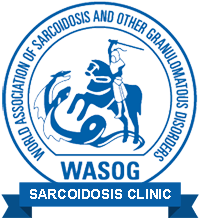Low-dose Naltrexone for the treatment of sarcoidosis
Keywords:
sarcoidosis, low-dose naltrexone, LDNAbstract
Systemic therapy is administered to 50% of patients and the need for long-term use of therapy is quite variable (1,2). Prednisone is often administered for many months with risk for multiple side effects, immunomodulators as steroid sparing agents have a delayed onset of action and have risks for infection and malignancies, and infliximab increases the risk for infection (1). In light of these issues, alternative options for therapy are desirable. We made a comparison between sarcoidosis and Crohn’s disease in that in each disease there is unregulated lymphocyte activity, a common unique pathological finding of non-caseating granulomas, and a similar approach to medical therapy (3,4). Low dose naltrexone (LDN) has been utilized for many conditions (5). Efficacy has been documented in Crohn’s disease with randomized controlled studies showing mucosal healing and histologic improvement (6-7). LDN is compounded in 1/10th to 1/20th the dose used for the FDA-approved indications of narcotic and alcohol dependence (8). Neuropeptides (e.g., enkephalins and endorphins) are present in the gastrointestinal tract and endocrine cells and modulate immune responses (9). Up-regulation of met-enkephelin and opioid receptors can be induced by a rebound effect by short-acting LDN (10). Higher levels of endogenous opioids and receptors inhibit cell proliferation which suppress T and B lymphocyte responses (11,12) and decrease production of pro-inflammatory interleukins-6 and -12 (13). In light of the Crohn’s disease LDN literature and similar experiences with other inflammatory conditions in our clinic (14,15), LDN was administered to a sarcoidosis patient with severe fatigue, sarcoid rash, and marked radiographic evidence of gastrointestinal involvement.
Downloads
Published
Issue
Section
License
This is an Open Access article distributed under the terms of the Creative Commons Attribution License (https://creativecommons.org/licenses/by-nc/4.0) which permits unrestricted use, distribution, and reproduction in any medium, provided the original work is properly cited.
Transfer of Copyright and Permission to Reproduce Parts of Published Papers.
Authors retain the copyright for their published work. No formal permission will be required to reproduce parts (tables or illustrations) of published papers, provided the source is quoted appropriately and reproduction has no commercial intent. Reproductions with commercial intent will require written permission and payment of royalties.

This work is licensed under a Creative Commons Attribution-NonCommercial 4.0 International License.







